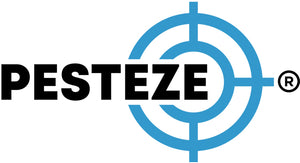PREVENT ROSE CHAFERS IN YOUR FLOWER BEDS

PREVENT ROSE CHAFERS IN YOUR FLOWER BEDS
Summary
Rose chafers are common pests that can quickly destroy flower beds, leaving behind skeletonized leaves and damaged blooms. By using natural repellents, preventive planting strategies, and good garden care, you can keep your flower beds safe from infestations.
Features
-
🌼 Barrier Protection – Use row covers or netting to shield flowers during peak beetle season.
-
🪴 Companion Planting – Add garlic, chives, and tansy to deter pests naturally.
-
🌿 Natural Sprays – Apply neem oil or insecticidal soap to stop feeding damage.
-
🧹 Garden Cleanup – Remove weeds, fallen leaves, and debris to reduce beetle shelter.
-
🪤 Smart Trapping – Place traps away from flower beds to lure pests out.
-
🔎 Early Monitoring – Inspect daily to stop infestations before they spread.
Guide Description
Flower beds are a favorite target for rose chafers, beetles that emerge in late spring and summer. These pests feed on flowers, leaves, and buds, leaving plants weakened and unsightly. While they can seem overwhelming, preventing rose chafers in flower beds is possible with a combination of natural strategies and consistent care.
One of the most effective ways to protect your flowers is by using barrier protection. Lightweight row covers or garden netting can be draped over flower beds to block rose chafers from accessing plants. This method is especially helpful during peak beetle season when infestations are most intense.
Companion planting offers another layer of defense. Rose chafers dislike strong-scented plants such as garlic, chives, and tansy. Planting these around or within flower beds creates a natural deterrent that keeps beetles away while enhancing biodiversity.
For direct treatment, natural sprays such as neem oil or insecticidal soap are safe, eco-friendly options. Neem oil disrupts the beetle’s feeding and reproduction, while insecticidal soap helps protect tender flower leaves from damage. Both should be applied regularly, especially after rain or watering.
Maintaining garden hygiene is key to prevention. Rose chafers are often drawn to decaying organic matter, so removing fallen leaves, dead blooms, and nearby weeds reduces hiding and breeding spots. A tidy flower bed creates fewer opportunities for pests to thrive.
When infestations are severe, trapping can be useful, but trap placement matters. Always position beetle traps far from your flower beds to draw pests away instead of toward your plants. This technique works best when combined with other preventive methods.
Finally, the most reliable form of protection is early monitoring. By inspecting your flower beds daily during the chafers’ active season, you can remove beetles before they spread and cause significant damage. Handpicking and dropping them into soapy water remains one of the simplest yet effective solutions.
With the right mix of barriers, companion planting, natural sprays, and consistent care, you can prevent rose chafers from overtaking your flower beds and enjoy a thriving, pest-free garden all season long.
- Devansh Subbagari


Comments 0